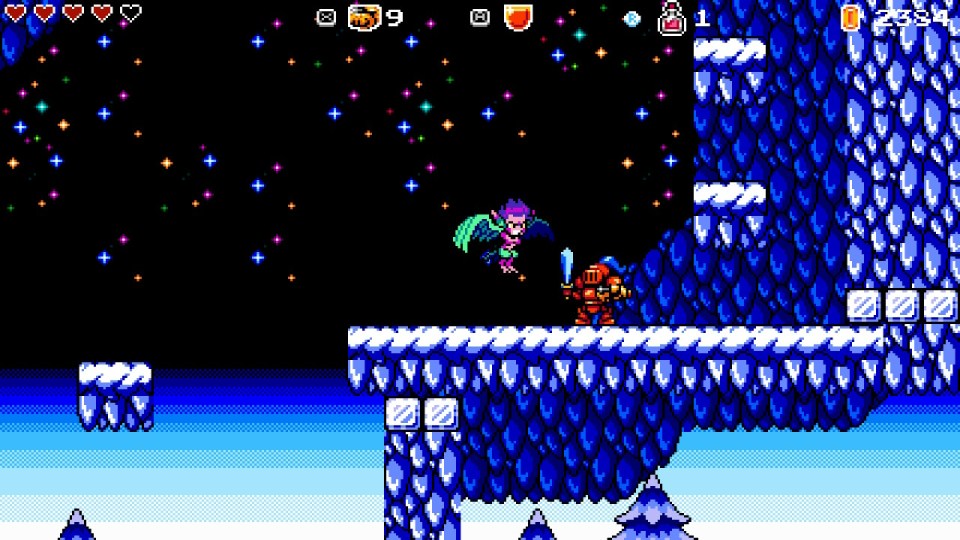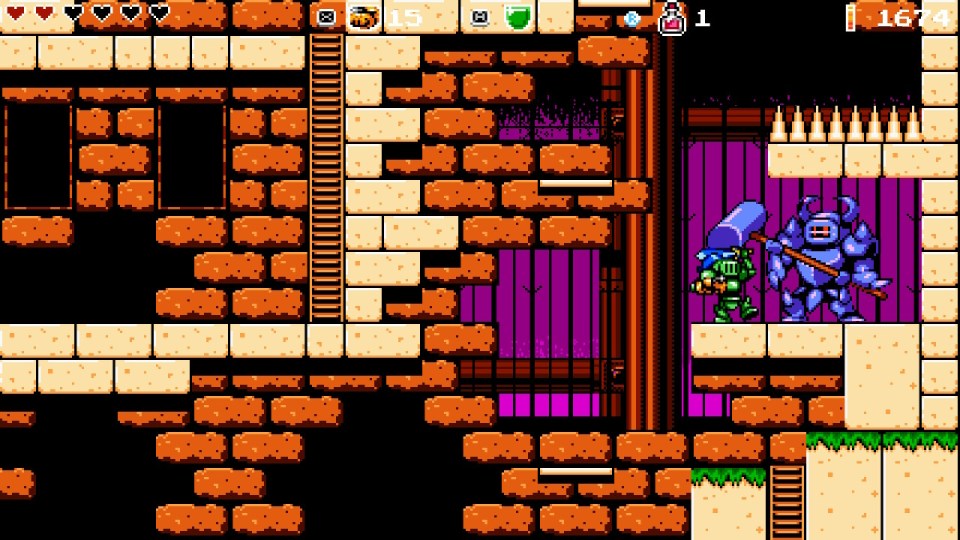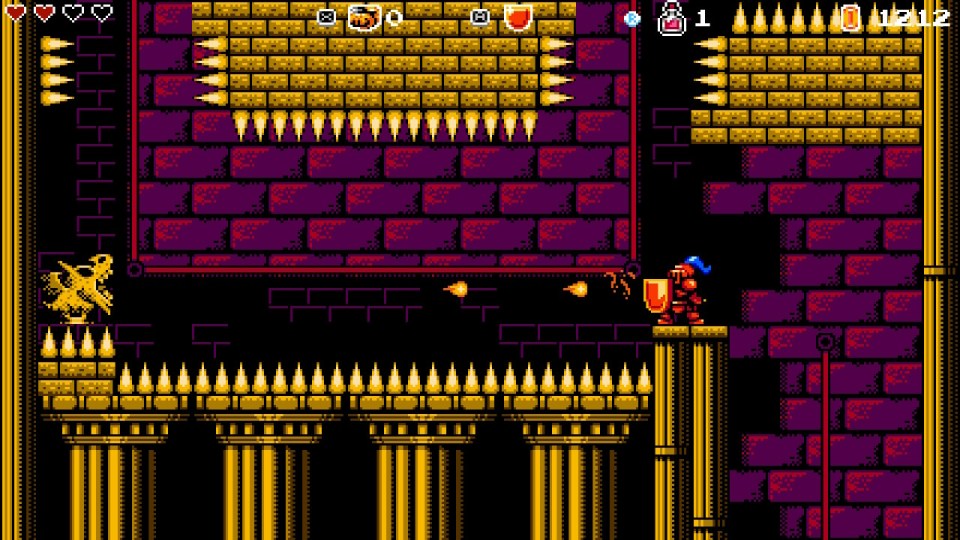Cathedral Review
Fast Facts
Cathedral
Developer: Decemberborn AB
Publisher: Elden Pixels
Website: https://decemberborn.com/
Genre(s): Adventure, Platformer, Action
Platform: Nintendo Switch (also available on PC)
Age Rating: PEGI 3
Release Date: 18/02/2021
Price: £12.59
A code was provided for review purposes
Introduction
Cathedral is a side-scrolling platformer. It is a Metroidvania, meaning there are several collectibles to collect throughout an expansive world. As the protagonist, a nameless knight, travel through snowy mountains, undersea caverns, and abandoned mines with a mission to demolish a demi-god named Ardur.

Story
The story featured in Cathedral is not a central point in the game. The plot does not deviate from the classic formula. As a knight, save the village from the forces of evil. However, the game provides subtle story elements that develop lore and educate the player on the game’s systems. For example, the developers implemented a character called the Green Wanderer. This character traversed throughout the map before the story takes place, leaving helpful hints and clues for the protagonist. While this does not develop an overarching plot, this character allowed the developers to cleverly advise the players without breaking immersion.

The developers of Cathedral, knowing the story is not the most fundamental element of the gameplay experience, made excellent decisions regarding the text functionality. Fighting bosses once the player dies will not replay the text shown before battle, allowing the player to immediately begin the battle again. Furthermore, all text boxes are skippable, meaning players will never be forced to read text they do not want to read. These accessibility features are especially helpful on subsequent playthroughs.
Gameplay
While the story elements are charming, they would not stand by themselves without solid gameplay mechanics. Thankfully, Cathedral does not disappoint. The nameless knight begins his journey with a simple sword and suit of armor. He will need to jump, slash, and thrust his way through enemies to save the kingdom.

As his journey progresses, this nameless knight encounters new weapons and abilities increasing both his maneuverability, and offensive capabilities. He also encounters armor augmentations and health upgrades that increase his durability. The additional strengths provided to the knight allow him to progress to new areas and explore previously barricaded paths.
Items
The developers implemented the unlockable items extremely well, as most items served multiple purposes, and did more than simply unlocking blocked paths. For example, one item places a platform down, allowing the player to travel further horizontally. This functionality is great for navigating the worlds, but the developers even incentivized the players to use this item in boss fights. One boss shoots a laser for a prolonged period, and to evade the attack, the player must quickly create a platform, and jump as high as possible. Including systems that challenge the player’s understanding of how to use items encourages rewarding gameplay and forces the player to constantly think about all tools provided to the knight.

In addition to the inclusion of versatile items, the developers teach the player how to play the game without telling them directly. Whenever offered a new tool, the game locks you in a room where that tool must be used to exit. This ensures the player understands the item and will be able to progress in the game. Moreover, the developers took this same approach when introducing the player to new enemies. Generally, new enemies are introduced in isolation, where the player can learn their patterns and how to dodge their attacks. This prevents the player from getting overwhelmed by new enemies. The decision to instruct their players without using extensive tutorials maintains immersive gameplay and keeps the players engaged.
Player Strength
While the capabilities of the player character are important, the functionality of the map and enemy designs are just as important. Once again, the developers were successful, providing engaging enemies, boss fights, and a fluid map. Every new area of the map brings new enemies, and the attack patterns vary widely from enemy to enemy. Some enemies lob massive snowballs, some detonate on impact, and others simply walk towards you.
The diversity in enemy design keeps combat interesting. Additionally, the boss fights are creative, and force the player to truly master the game. After each boss is defeated, the player gains a new ability that allows them to explore the map further. While the large map may seem overwhelming at first, the game features portals that allow the player to travel easily from one end of the world to the other. The enemy designs and teleportation portals ensure that the gameplay is enjoyable and enable unique encounters.
Difficulty
It is important to note that this game is quite difficult. Enemies are scattered throughout the environments, and they deal massive damage. Furthermore, the boss fights are grueling gauntlets of challenge. Despite this, the excellent design will inspire many players to continue playing. In place of a lives system, dying reduces the player’s collected gold. This death system reduces the difficulty a fair amount, as the player is never forced to re-complete areas that have already been cleared.
Furthermore, the game offers options for players who are struggling. Players can spend some of their gold to boost their health bar, giving them more than the maximum amount of health. While this is helpful, using this frequently reduces gold significantly, so high skilled players will opt to save their gold for armor upgrades and other permanent upgrades. While the difficulty was never too overwhelming, players who do not wish to challenge themselves may want to stay away from this title.

Music/Sound
The chip-tune soundtrack, reminiscent of games from the past was excellent. The music was catchy, and sound effects were also impressive. The sound effects helped the player differentiate between attacks that connected and those that did not damage enemies. Simply put, the auditory design in Cathedral was excellent.
One thing of note was that any room with a portal located inside it featured odd staticky music. While not inherently bad, it was mildly off-putting, and was not catchy whatsoever. It was neither catchy nor upbeat. This only mildly detracts from the gameplay, as overall the music was excellent and left little to be desired.
Visuals
The visuals on offer were also excellent. Enemy designs had significant variety and each new environment brought new backgrounds and tile sets. The colors pop from the background, and color choices stick out without clashing amongst themselves. The visuals were extremely impressive.

Despite pleasant graphics, certain enemies have specific weaknesses that could have been better expressed by the visuals. For example, the player needs to face stone golems. These golems wear a jewel on their head. While their weak point is symbolized by the jewel, the jewel is significantly larger than the location where the enemy can be damaged, confusing the players. It would have benefitted the player for there to be a smaller gem on top of the first one in the size of the area where the enemy could be damaged, so the player would know exactly where to aim their attacks. Regardless, graphical miscommunication was not very prevalent and only occurred occasionally.
Additional Notes
While mainly positive throughout the review, there are a few things to touch on. First, the initial town visited by this unnamed knight is massive, and traversing the town is tedious. Condensing the town would have decreased the burden felt when attempting to visit a specific location in town.
The decision to require the player to use both the attack and down buttons to attack below the player baffled me. This forces the player to press both buttons, which is mildly inconvenient. The down button does not have any actions tied to it, and it would have been easier to control the knight if the option to bind the downward thrust to the down arrow was available. Furthermore, the amount of time the sword stays underneath the knight is quite short, so spamming the attack button and holding down is the ideal way to attack enemies that are below the knight.

Moreover, there are some puzzle sections that are incredibly frustrating. One challenge required the player to locate four buttons, hiding one button in the background. Guessing blindly to find the button was not rewarding, and it was the most frustrating puzzle in the game. While this did not occur frequently, puzzles like this detracted from the gameplay experience.
Conclusion
Cathedral is an excellent game, showcasing many distinct landmarks, varying enemies, excellent boss fights, and a fully fleshed out playable character. Despite some lackluster puzzles and the decision related to the downward thrust, Cathedral offers incredible value. I thoroughly enjoyed my time with this game.
Rapid Reviews Rating

You can purchase Cathedral from the Nintendo eShop here

You can find and read our reviews on OpenCritic.





